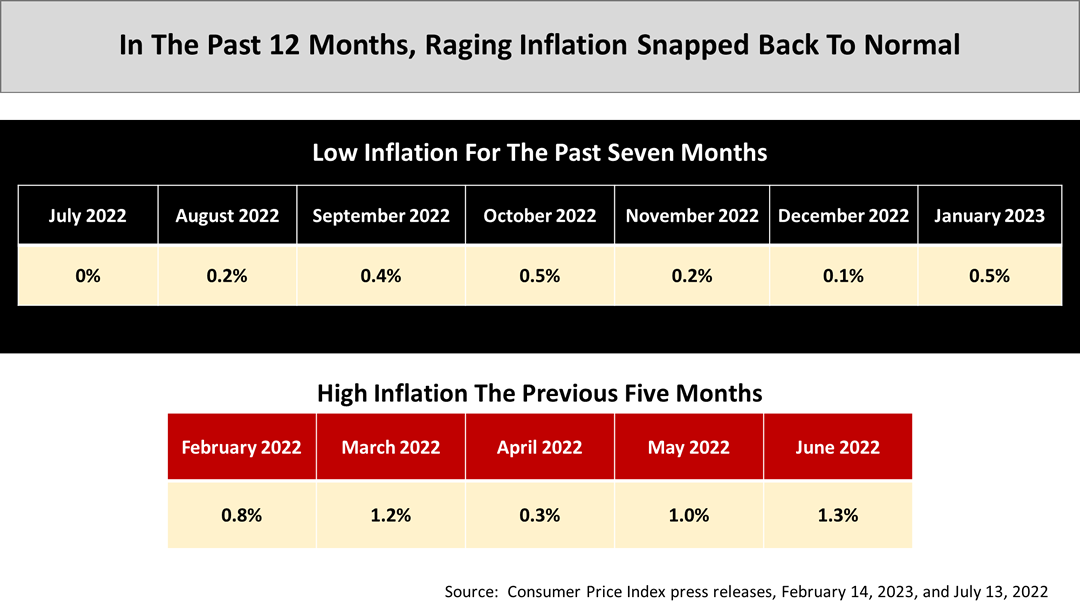Over the last 12 months, the Consumer Price Index increased 6.4% before seasonal adjustment. With the Federal Reserve targeting a 2% inflation rate, it may seem like inflation is still not under control. But if you break down the monthly inflation figures, it’s a tale of two very different periods: a five month period of high inflation followed by much lower inflation for the last seven months.
The average monthly increase in inflation for the past seven months was .27%. That’s 3.25% on annualized basis, which is not so far from the Federal Reserve’s 2% goal.
The Federal Reserve’s survey of the Federal Open Market Committee, indicates two more rate hikes of a quarter of 1% are yet to come, with one in March and another in April or May. This is expected to complete one of the most aggressive rate hike campaigns in the history of the last century.
At the end of a brutal rate hike cycle, the economy is similarly divided. The U.S. Index of Leading Economic Indicators has sunk eight straight months, which historically is a sure sign a recession is on the way. However, the job market is booming, with 11 million jobs open but only 5.7 million job seekers. This means consumers will continue to have money to spend and consumers drive 70% of the economy.
Whether a soft landing would be possible after very aggressive Fed tightening has been the big question facing investors for many months. But it is starting to seem possible that there may be no landing at all. Inflation could settle near the 2% target by the end of 2023 and the economy could continue to grow modestly, never touching down.
It’s an impressive demonstration of the power of the U.S. Federal Reserve System, and evidence of what makes America exceptional.



